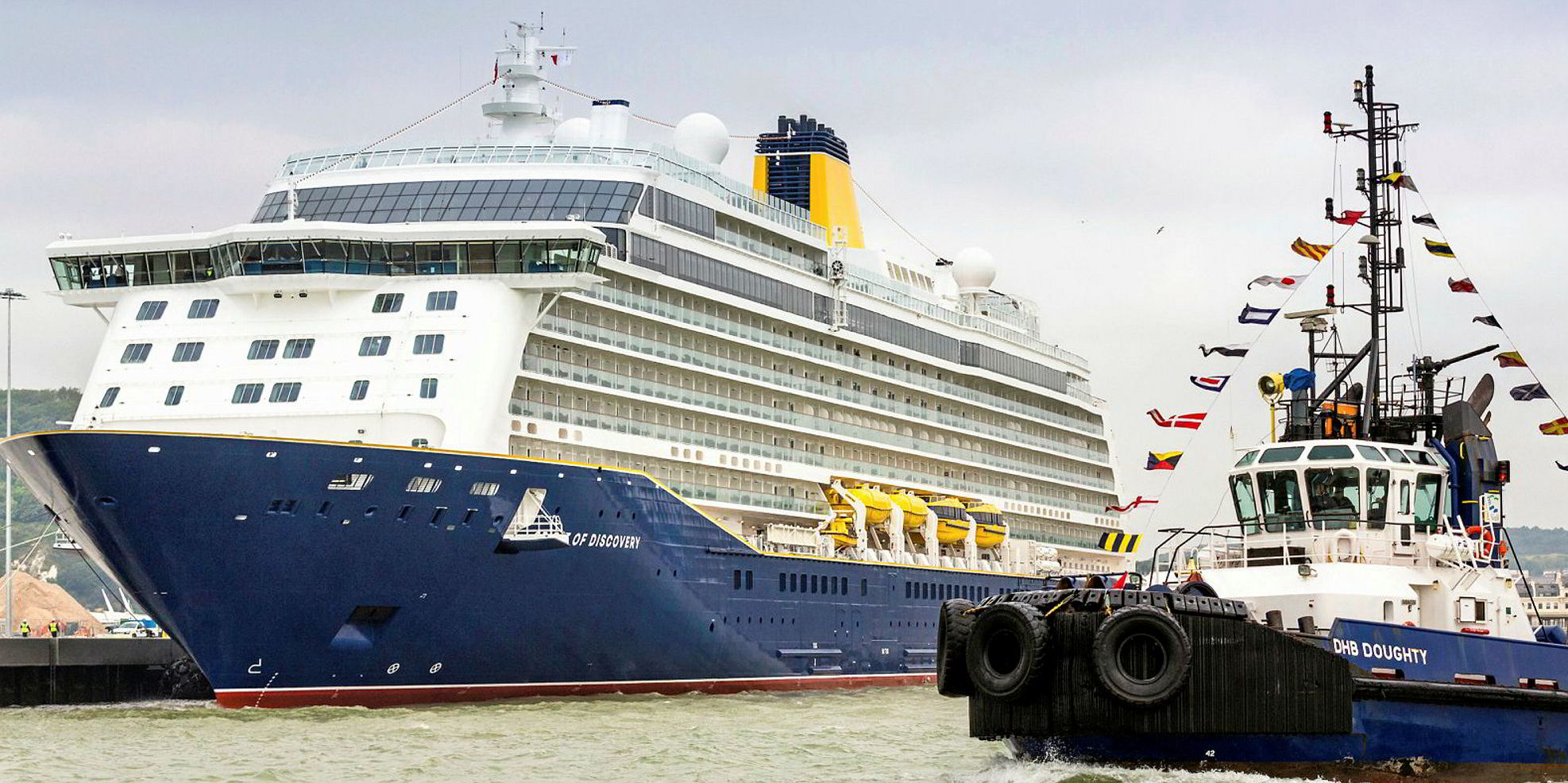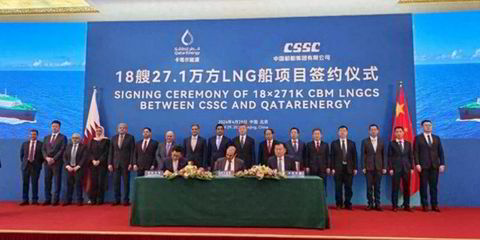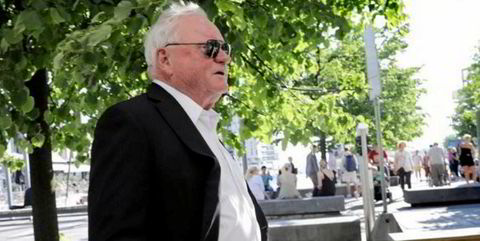When the Spirit of Discovery arrived at its home port of Dover, England, it marked what owner Saga Group hopes will be the catalyst for the transformation of its cruise and travel business.
The company — established in 1959 and associated with providing holidays and financial services for the over-50s — is swapping its classic, older vessels for two newbuildings.
The first of those ships, built at Meyer Werht in Germany, is the Spirit of Discovery, named on 5 July by the Duchess of Cornwall — 20 years after Saga’s first cruiseship sailed from the port on the south coast of the UK. The Spirit of Adventure will follow in August next year.
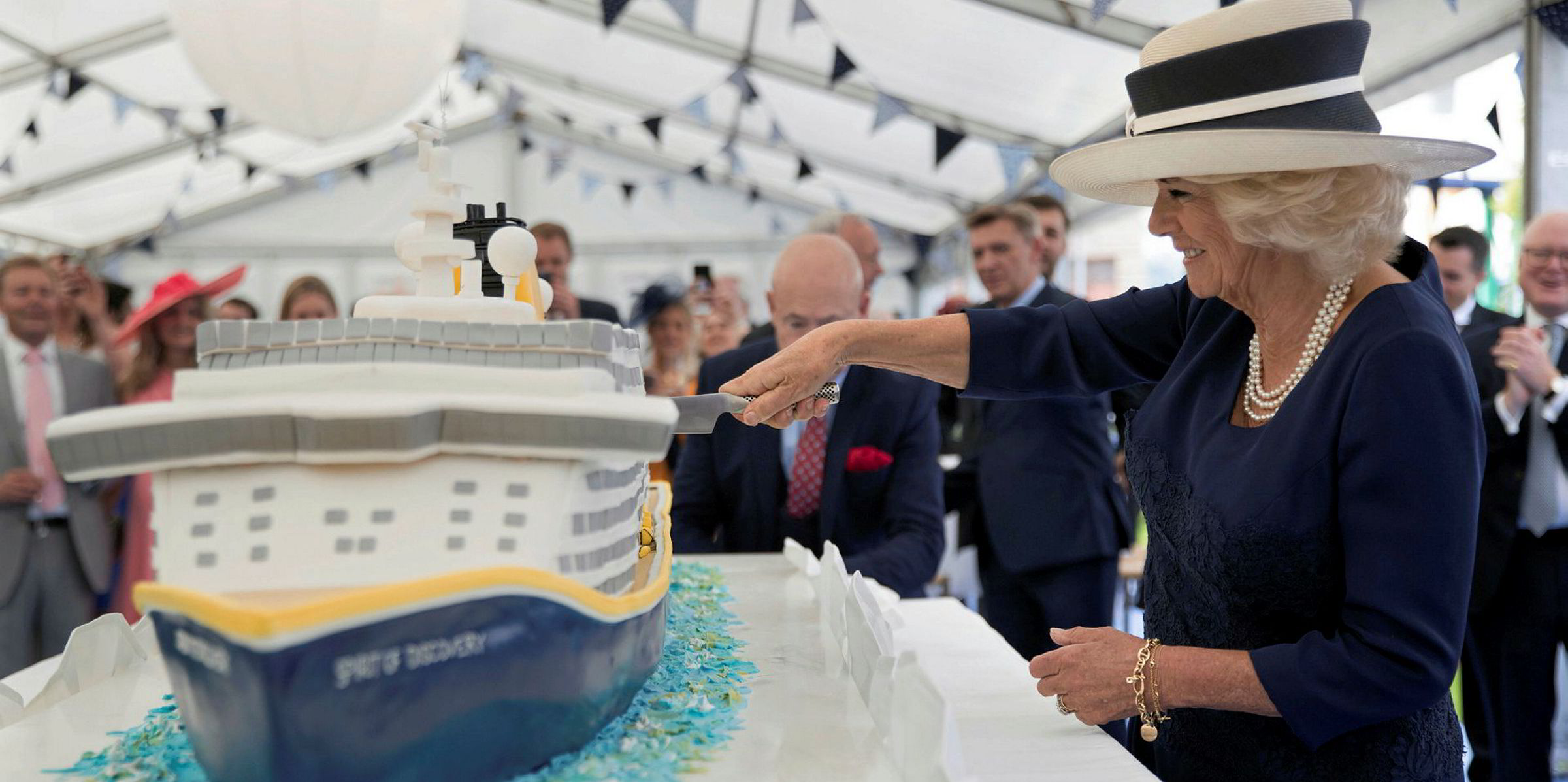
The vessels are the company’s first-ever newbuildings and replace the 720-berth Saga Sapphire and 602-passenger Saga Pearl II (both built 1981).
Saga Generation
Saga’s reputation of catering for older consumers gave rise to the term Saga Generation to describe those born shortly after World War II whose "grey pound" spending power has been a key driver of the UK economy.
But the group has hit stormy waters recently after facing, in chief executive Lance Batchelor’s words, challenging headwinds in both its broader travel operations and insurance.
Shares have slumped after a group pre-tax loss on continuing operations for the year to January 2019 of £134.6m ($177m). The company took a goodwill impairment of £310m relating to the group’s insurance operations.
However, Saga Cruises is one area showing plenty of promise. Its strategy of providing differentiated or “unique" products has been adopted as the blueprint for improving fortunes in other group divisions.

Saga occupies headquarters that tower above the shoreline at Sandgate overlooking the English Channel, close to Folkestone, where the firm was started by Sidney de Haan to provide holidays for elderly British holidaymakers.
In 2004, the company fell into private equity hands and 10 years later was floated on the London Stock Exchange, where it is traded in the FTSE 250.
Today, the group’s various activities are said to have about 2.7 million customers.
Until now, its cruise operations have focused on acquiring older, secondhand ships, investing heavily in refurbishing them and operating them for eight to 12 years.
Among those classic vessels was its first ship, the 24,000-gt Saga Rose (ex-Sagafjord, built 1985), which circumnavigated the globe 44 times.
Another, the 9,570-gt Spirit of Adventure (built 1981), was originally operated by Peter Deilmann Cruises as the Berlin.
Saga Travel chief executive Robin Shaw says that despite using older vessels, quality onboard service is reflected in repeat rates of about 75% for its cruiseships and per diems (daily cruise spending per passenger), which is well above the UK average for voyages out of the country.
I suppose it is that success which prompted us to look very closely at the newbuild opportunity, which we did in earnest during 2015
Robin Shaw
“I suppose it is that success which prompted us to look very closely at the newbuild opportunity, which we did in earnest during 2015,” says the chief executive, whose responsibilities also embrace cruise.
That December, a contract was signed with Meyer Werft, the business case being based primarily on the economies of operating new versus older vessels — more efficient engines and less maintenance.
It did not assume a significant increase in occupancy, apart from inflation.
Nevertheless, per diems — as cabin rates are termed — for the Spirit of Discovery are well ahead of those of the older vessels, reflecting the appeal of newer, all-balcony ships.
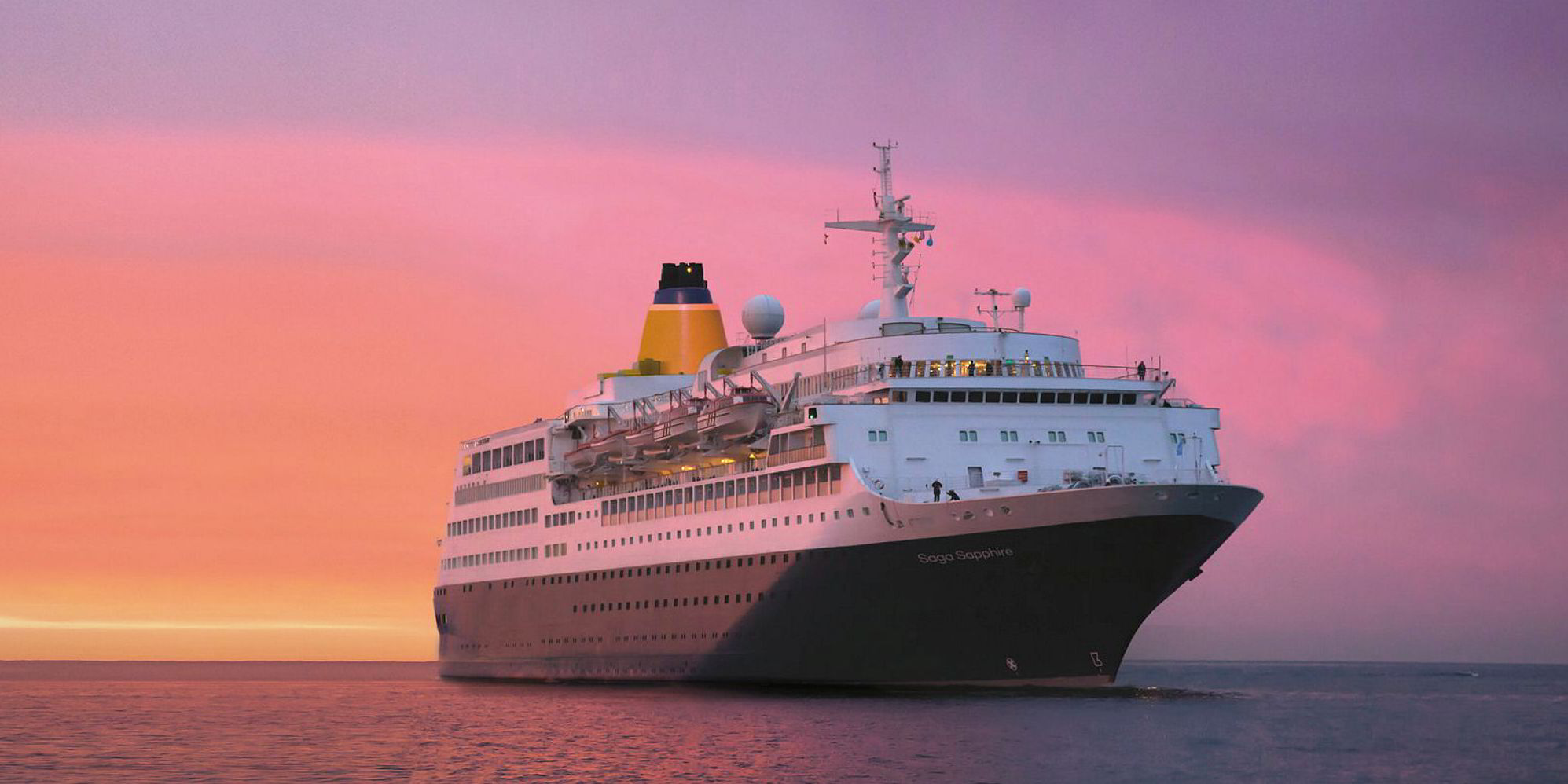
The two Saga newbuildings each have 999 berths, making them larger than Saga’s former biggest vessel, the 720-passenger Saga Sapphire.
“Currently, you build either a cruiseship of 1,000 passengers or less and operate in the luxury premium market, or a ship of 3,000 passengers or more,” Shaw says. “No one builds a ship of 1,200, 1,500 or 2,500 passengers.”
Premium service
However, he tactfully avoids criticising what he refers to as the “commodity” end of the cruise market with its much larger ships.
“I am not belittling it because the cruise market does an exceptionally good job providing holiday experiences," Shaw says.
“But we are in the premium end of that market place,” he adds, confirming the Spirit of Discovery cost about £300m ($378m at current rates) and the Spirit of Adventure about 10% more, due to fluctuating foreign-exchange rates.
The vessels have been financed on a 20% own cash-deposit basis and 80% fixed-rate bank borrowing, with equal instalments over 12 years.
Saga has already sold one of its two older ships — the 602-passenger Saga Pearl 11 — to Aqua Explorer Holdings, a newly formed British Virgin Islands company involving Greek interests.
We are fully on track to deliver the kind of revenues we need for the new ships
Robin Shaw
Shaw says the newbuildings will be highly cash generative once in operation and after loan repayments. Saga has stated publicly they are each expected to deliver £40m Ebitda on an annualised basis.
Customers typically buy cruises well in advance, “so we know our revenues, our costs because they are controllable, and we fix our fuel in advance”.
“We are fully on track to deliver the kind of revenues we need for the new ships,” Shaw says.
Shaw describes Saga Cruises as a unique small-ship offering that can thrive within the cruise market and as the only small cruise line dedicated to the British market.
Saga sources 98% of its passengers from the UK and home-ports its vessels in Dover, Southampton and sometimes Portsmouth.
The Spirit of Discovery will be the only cruiseship built and delivered exclusively for the British market this year.
I think we have the best of what we call the British contemporary hotel feel. We are a British cruise line, building to British tastes for British people because that is what we are
Robin Shaw
Designer SMC of London is said to have taken inspiration from the ultimate in London-based boutique hotels to create what Saga describes as “boutique cruising”.
Listening to passengers
“I think we have the best of what we call the British contemporary hotel feel,” Shaw says. “We are a British cruise line, building to British tastes for British people because that is what we are.”
Saga says it has responded to passengers' feedback, including requests for a walkaround promenade deck, a rare feature on modern cruiseships.
Consequently, Saga’s newbuildings are all-balcony and feature speciality restaurants and multiple entertainment areas, including a theatre. The Spirit of Discovery also features about 400 pieces of original British artwork.
“All the things a large cruise line offers except for the waterparks and dodgems,” Shaw says. “She is an absolute stunner inside, she has exceeded our expectations.”
The UK’s over-50s total about 24.9 million, close to 40% of the population and hold 75% of the UK’s household wealth, according to Saga.
With that figure expected to be about 30 million over-50s by 2044, Shaw says Saga’s focus on the grey pound could see it ordering more new ships but not until demand, costs and profitability of the Spirit of Discovery and Spirit of Adventure have been assessed.
